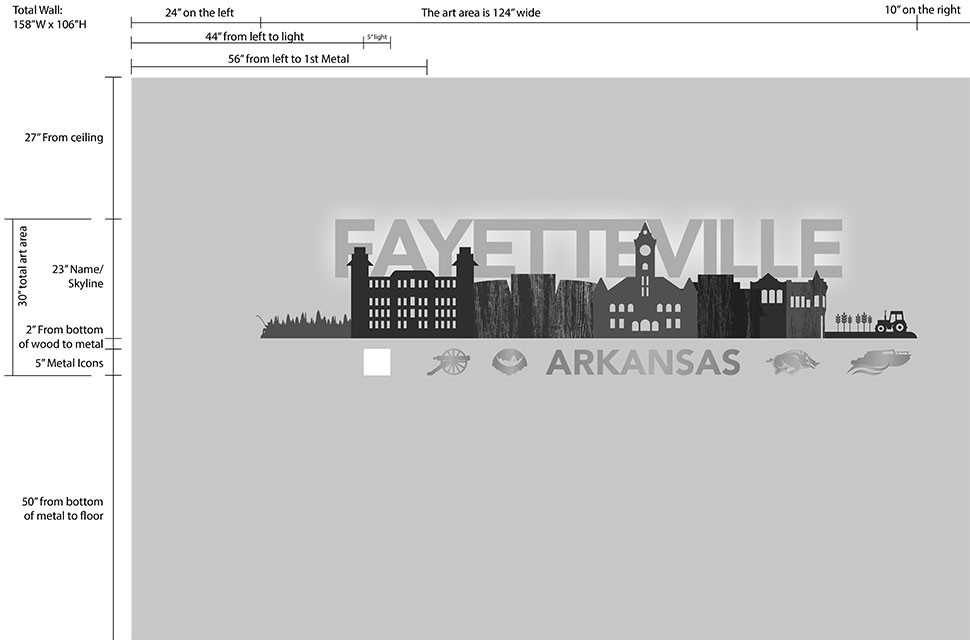Design for one of the conference room wall displays.
Lakeshore Recycling Systems (LRS) recently inaugurated their new office headquarters in Rosemont, Illinois, featuring a spacious one-and-a-half-floor layout. Despite the company’s steadfast focus on expansion, new acquisitions, and exceptional customer service, the walls of their new space remained unadorned for too long. Recognizing the need to create an environment that not only reflects their brand identity but also serves as a dynamic narrative of their journey—spanning from historical milestones to current growth and future aspirations—LRS sought a solution that would instill pride and captivate potential partners during office tours.
For LRS, the key was to find a visually compelling solution that not only resonated with their brand but also had the versatility to evolve alongside the company’s upward trajectory. As they surged beyond the anticipated $1 billion revenue mark, it was crucial that their office decor was more than just aesthetically pleasing; it needed to be a living testament to their commitment to excellence, sustainability, and innovation.
Enterprising and forward-thinking, LRS set out to curate an environment that not only showcased their rich history but also seamlessly integrated their ongoing success stories. The aim was to create a space where the walls served as both a backdrop and a storyteller—conveying the journey from humble beginnings to becoming an industry leader.
In choosing the right solution, LRS considered not only the immediate impact on visitors but also the enduring relevance as they continued their trajectory of growth. The chosen decor needed to be a dynamic canvas capable of adapting to new milestones, acquisitions, and industry trends. This approach ensured that LRS wouldn’t just have an office space; they would have a living narrative, a testament to their commitment to sustainability, innovation, and client satisfaction.
With this strategic approach, LRS transformed their office into more than just a workplace; it became a tangible expression of their identity, a canvas that evolves with their journey, and an engaging backdrop for the stories they share with potential acquisitions. The result is an office space that not only mirrors the company’s past but also propels them into a future where every inch of their headquarters tells a compelling story of growth, resilience, and success.
Word of mouth led them to Jon Kuhn, president of Banner Up Signs in Sycamore, Illinois. The depth and creativity of the project was beyond what Kuhn’s company could do in-house, so they brought in my company, OC Creative, a creative agency in Northern Illinois with more than a decade of experience creating wall displays.
The two companies had paired up before to do similar projects—everything from refinishing a historic 1920s train station ticket window as part of a history wall to a timeline in the style of the Game of Life board game.
However neither of us had tackled something of this scope.
LRS wanted unique displays in recyclable or sustainable material for eleven walls in their office, a challenge we were excited to take on and confident to deliver on a relatively tight schedule.
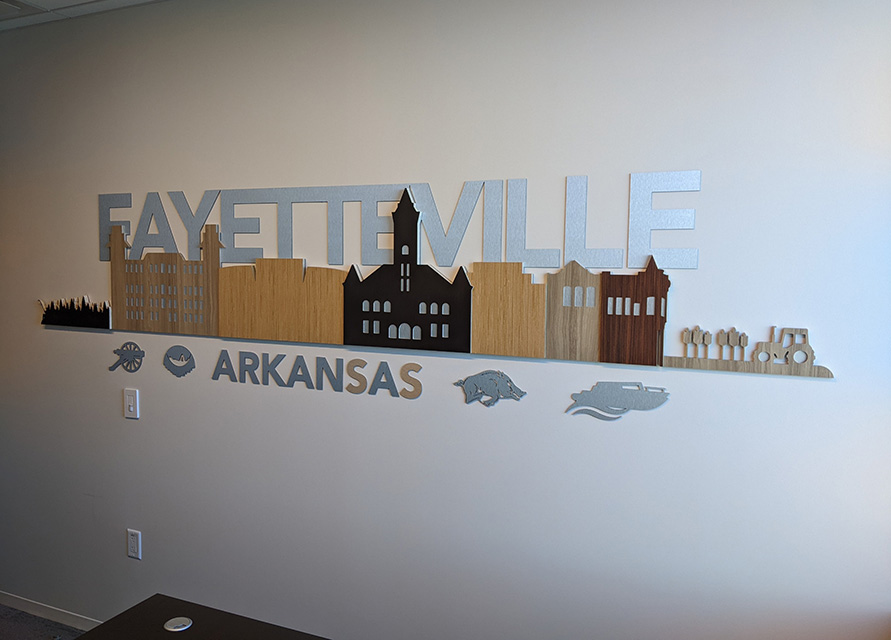 The conference rooms are named after their four regional headquarters.
The conference rooms are named after their four regional headquarters.
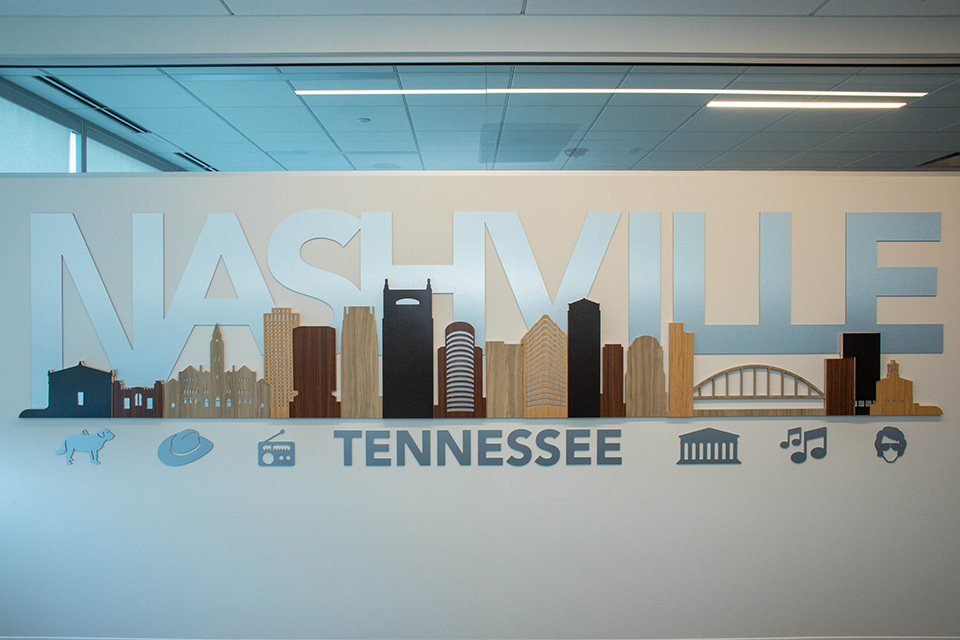 The Nashville, Tennessee wall display.
The Nashville, Tennessee wall display.
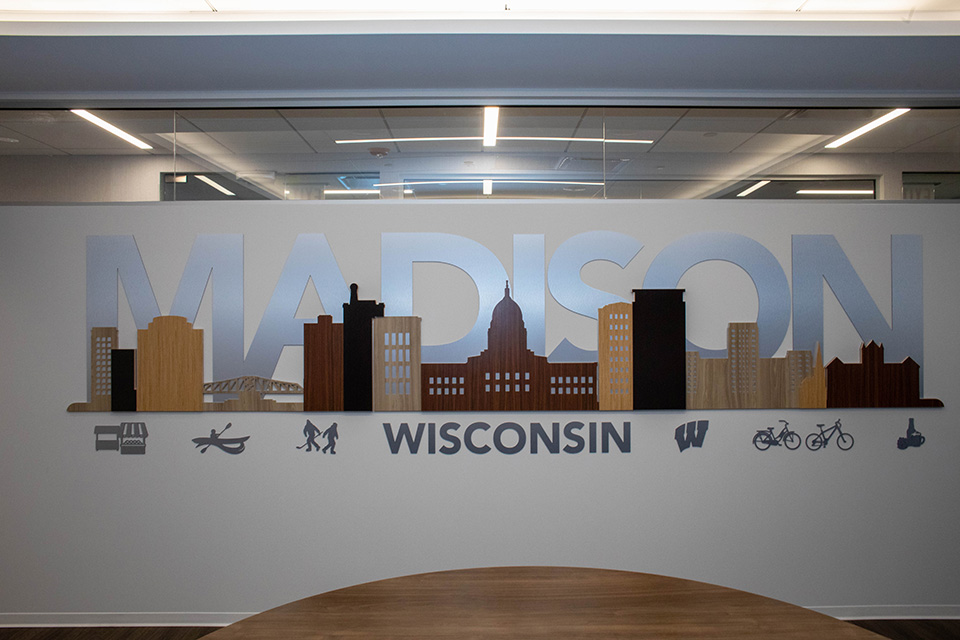 The Madison, Wisconsin wall display.
The Madison, Wisconsin wall display.
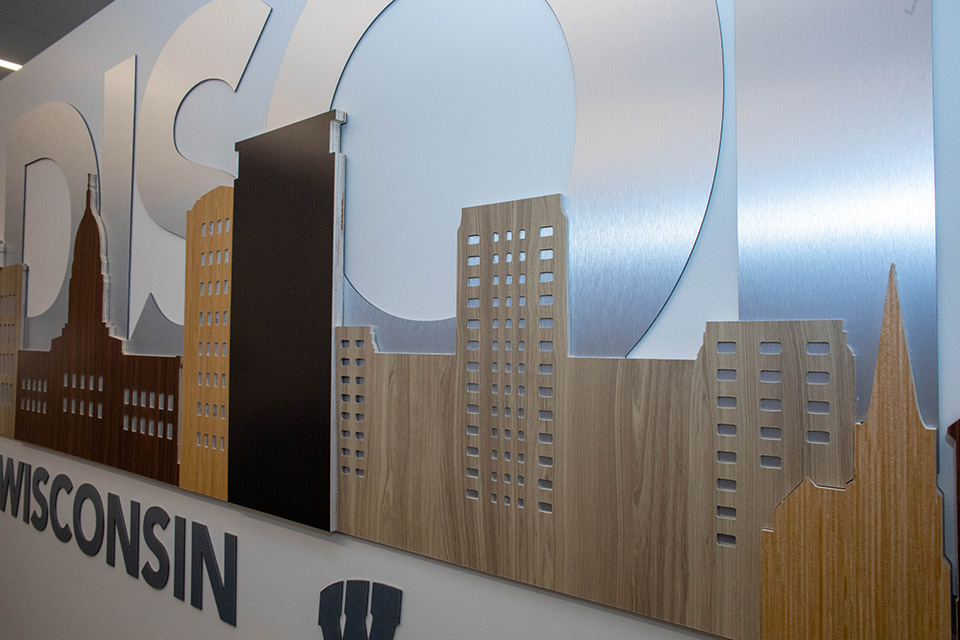 Buildings overlap in front of one another.
Buildings overlap in front of one another.
 Minneapolis, Minnesota wall display.
Minneapolis, Minnesota wall display.
 The metal portion of the projects was constructed from 3mm Alupanel.
The metal portion of the projects was constructed from 3mm Alupanel.
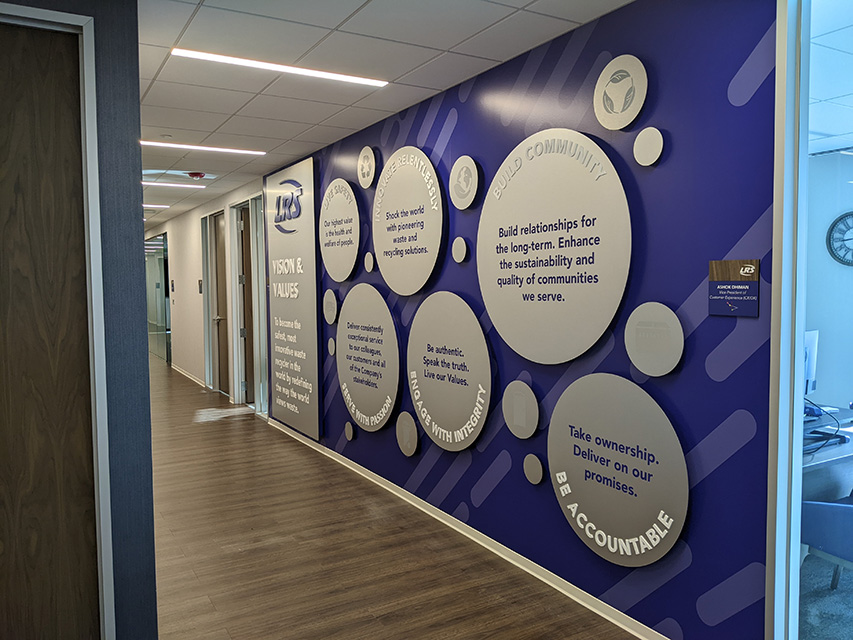 The Vision and Values wall display
The Vision and Values wall display
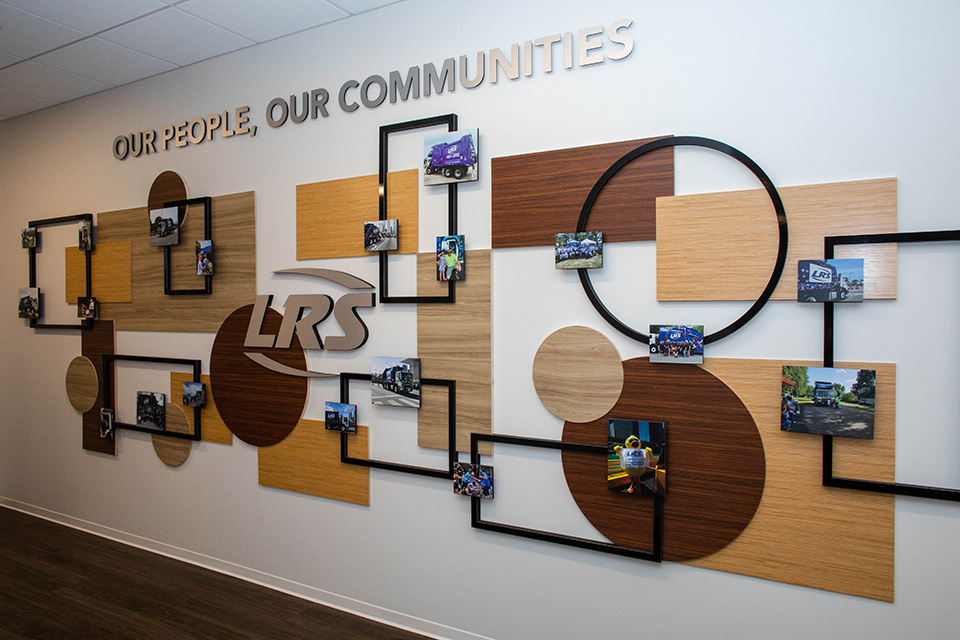 The Our People and Parade wall.
The Our People and Parade wall.
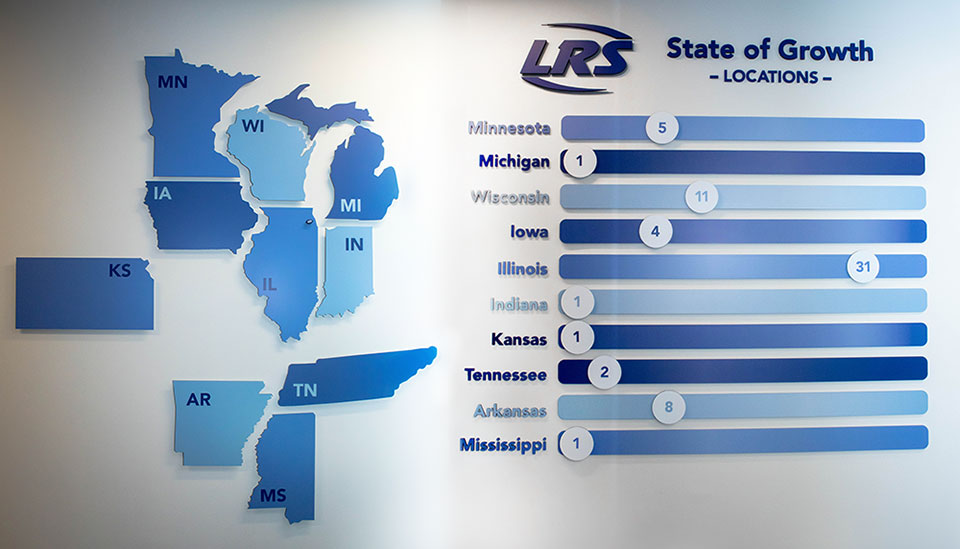 The State of Growth wall.
The State of Growth wall.
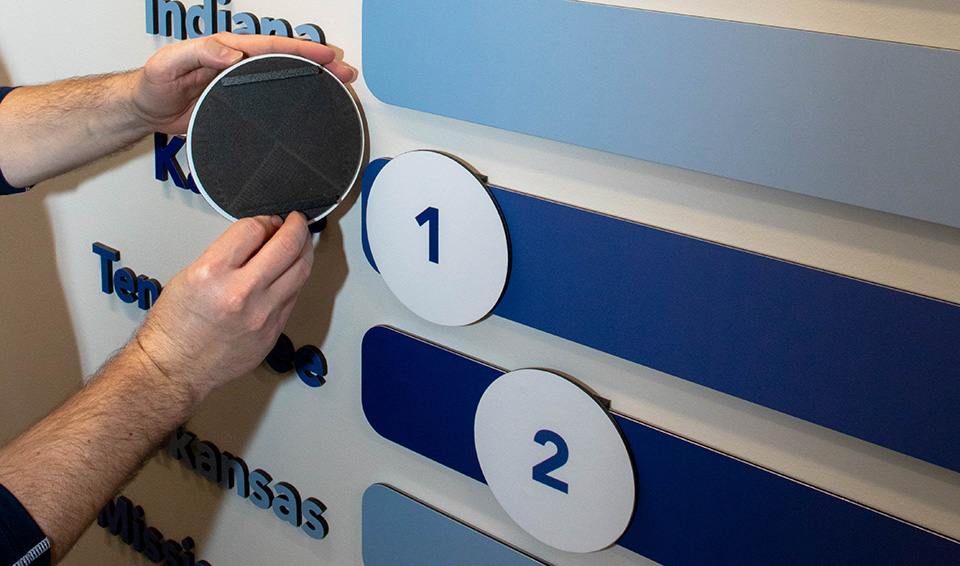 Horizontal sliders on the back allow numbers to be easily recalibrated on the display.
Horizontal sliders on the back allow numbers to be easily recalibrated on the display.
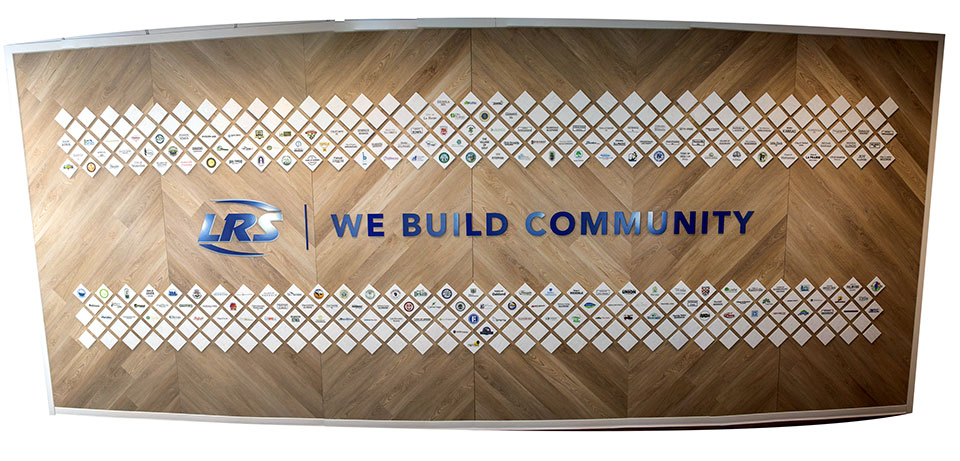 The We Build Community wall display.
The We Build Community wall display.
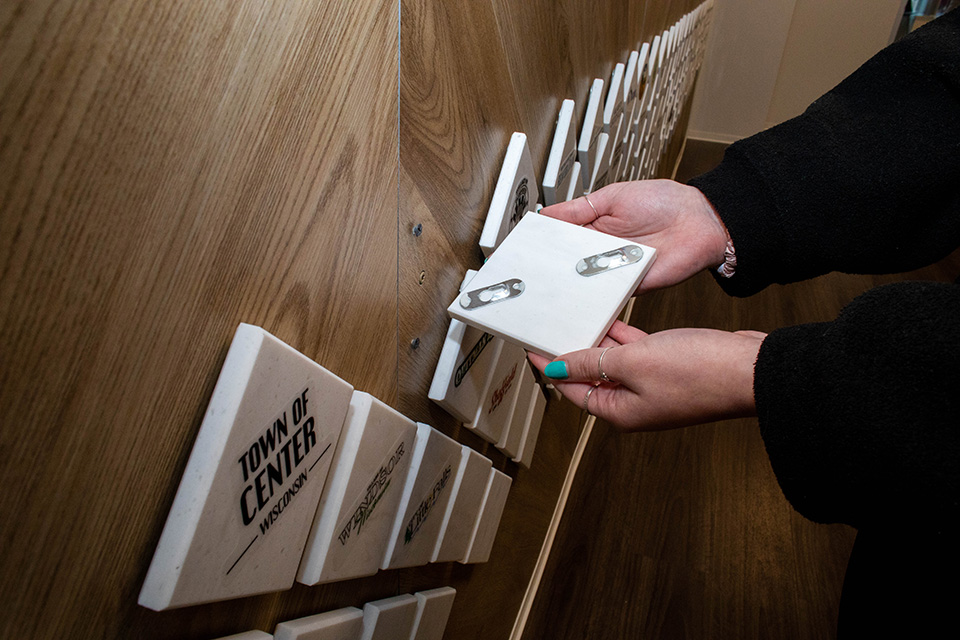 Two slotted picture hangers were attached to the back of each panel.
Two slotted picture hangers were attached to the back of each panel.
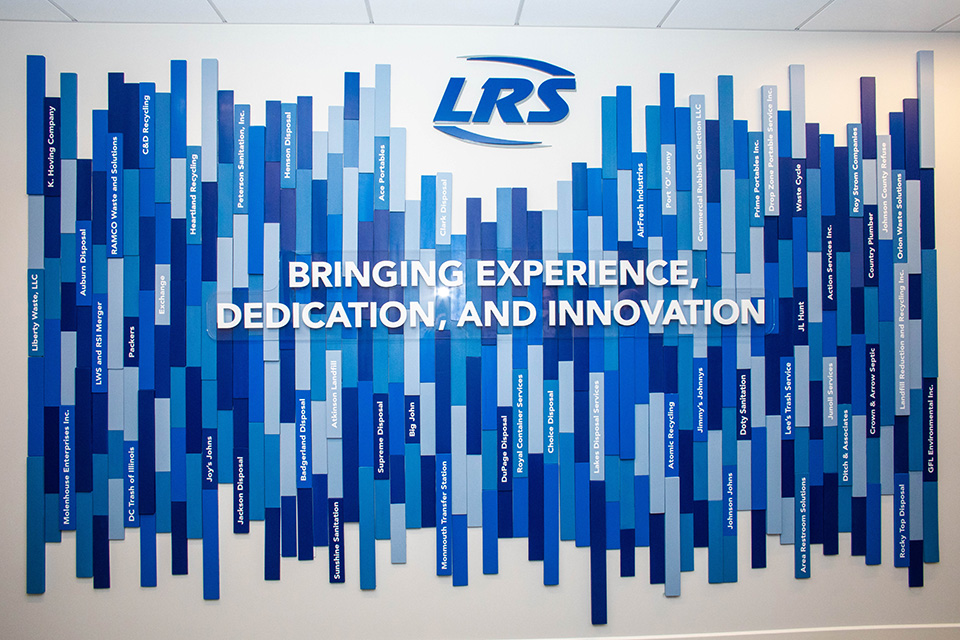 The Acquisitions Art wall.
The Acquisitions Art wall.
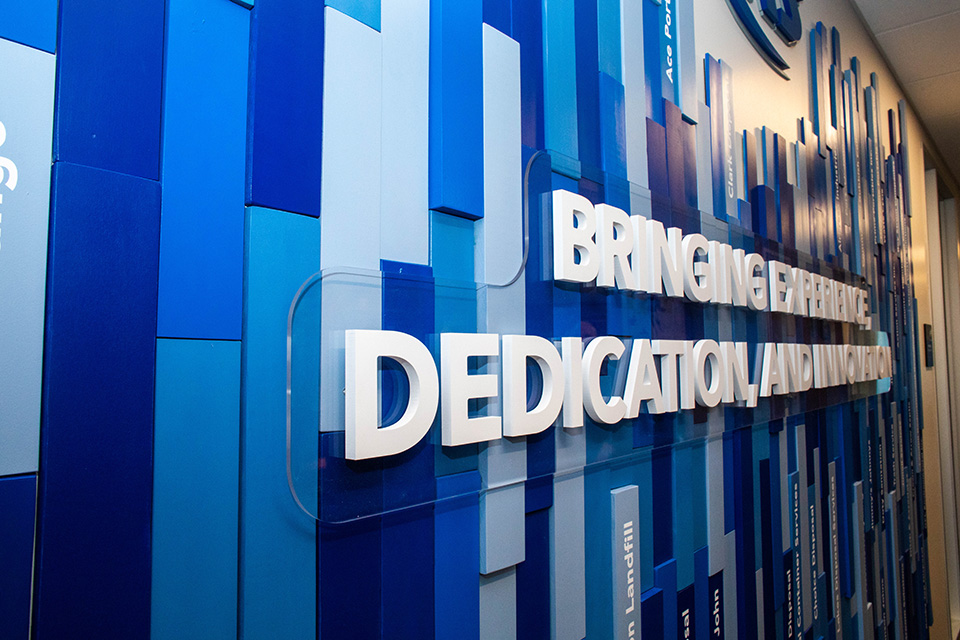 The design features panels in LRS-branded blue which are elevated from the wall in different layers, each showing off the name of one acquisition.
The design features panels in LRS-branded blue which are elevated from the wall in different layers, each showing off the name of one acquisition.
 Acquisitions By Year wall display.
Acquisitions By Year wall display.
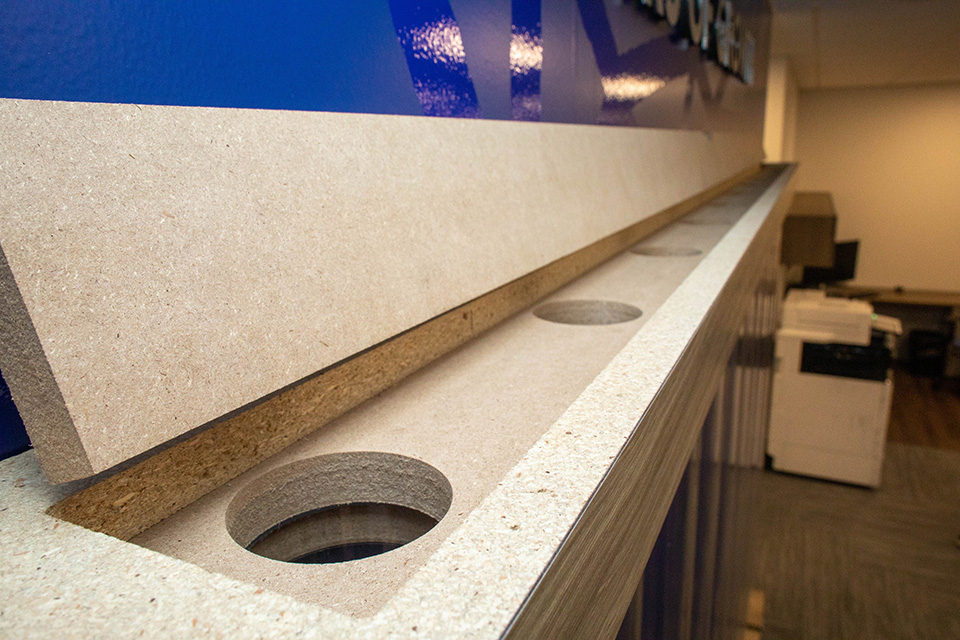 Oval shape at the top of the Acquisition Celebration wall.
Oval shape at the top of the Acquisition Celebration wall.
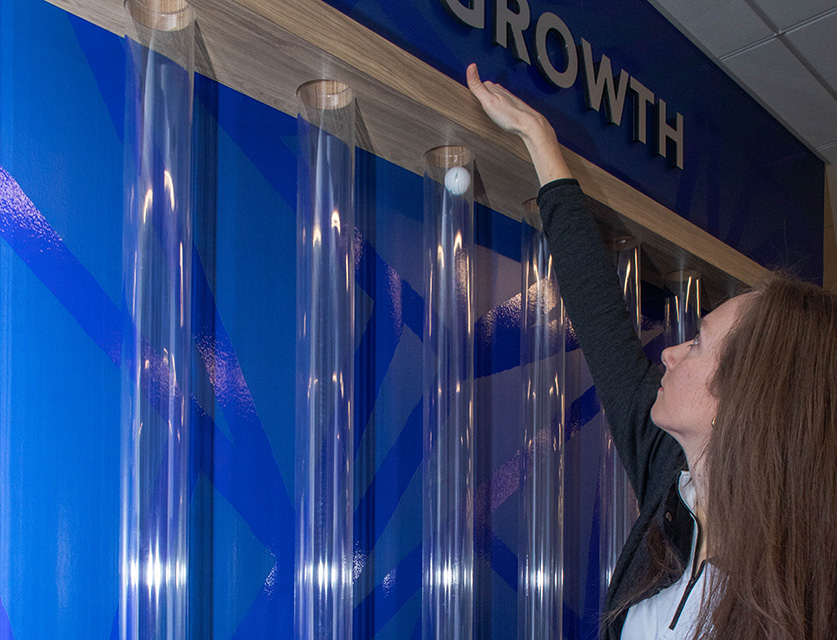 Placing a ping pong ball into a tube.
Placing a ping pong ball into a tube.
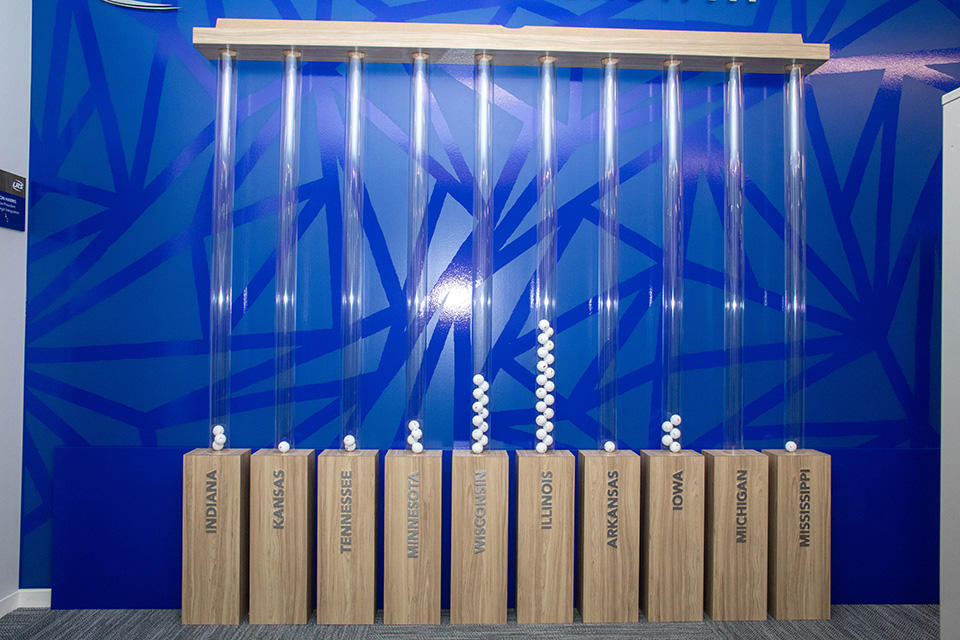 The tubes are arranged with the greatest numbers located in the middle, creating a bell curve.
The tubes are arranged with the greatest numbers located in the middle, creating a bell curve.
